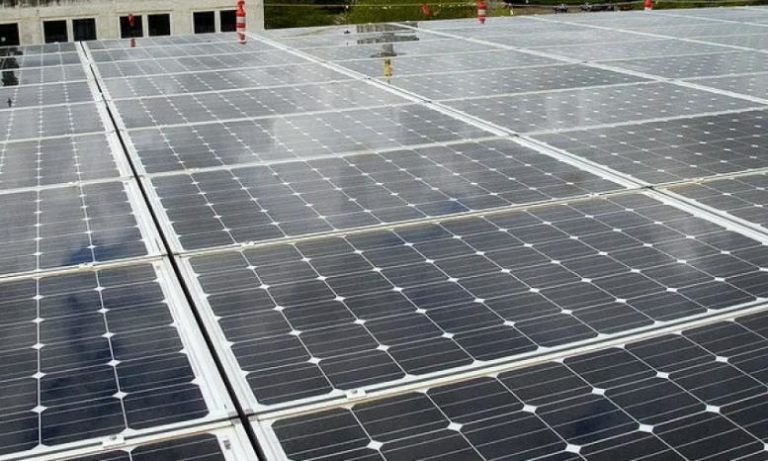How to choose solar panels
For the autonomous supply of electricity to the house using different types of solar panels. It is the most popular alternative energy source, which can not only generate electricity, but can also be used for home heating. The technology is improving, the efficiency of the system is improving.
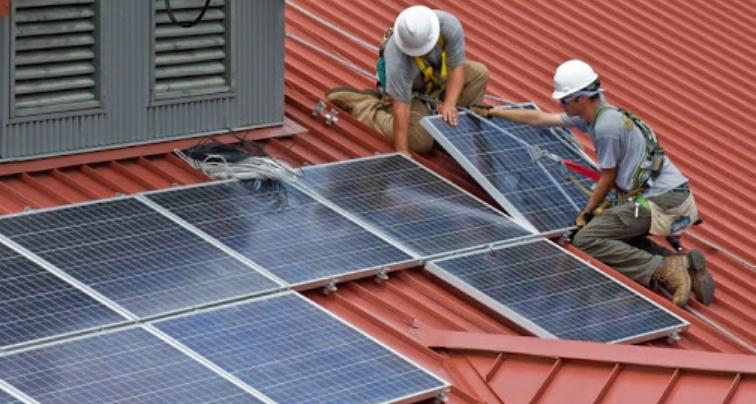
If 10-15 years ago not many people could install solar panels because of the very high price, today the budget is much lower. The payback period is also decreasing. And thanks to modern photovoltaic cells used in panels, even in the middle belt solar panels produce enough electricity.
Types of solar panels
Solar devices, as they are also called solar panels, can be divided into 2 main groups. It all depends on the technology by which they are produced:
- Photovoltaic type, can be film or silicon. These are polymeric photocells, which are connected in series by contacts. A separate module is a solar panel.
- Solar collector, comes in tubular and flat. The best solution, which can store electricity or heat the coolant.
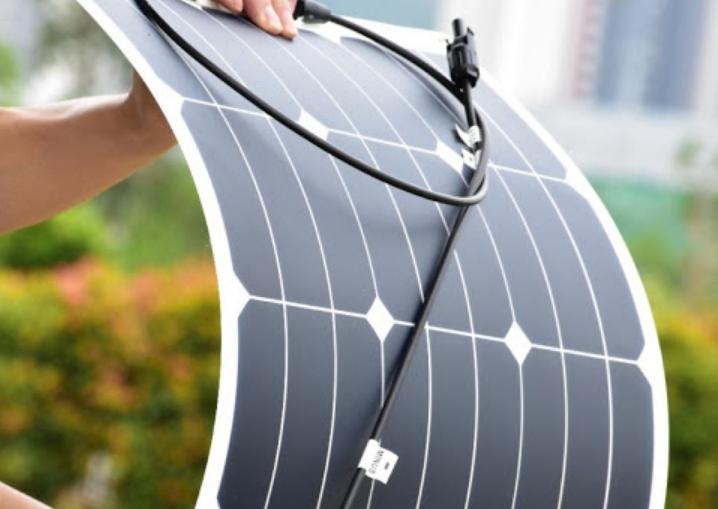
How photovoltaic converters are built
The name of the elements suggests that they convert solar energy into electrical energy. They are produced in two versions - on an aluminum frame and on a polymer canvas.
In the first version, the front part is protected by glass and the back wall is covered by an insulating film. In the second, both protective parts are made of polymeric materials.
All photocells are connected to each other by conductive busbars, which are connected to form a single system. Depending on the characteristics of the silicon used, there are these types of solar panels:
- Monocrystalline. They use pure silicon, which is grown as a monocrystal and then cut into wafers between 0.4 and 0.4 mm thick. These blanks serve as the basis for future solar panels. One panel requires 36 of these plates.
- Polycrystalline variants are much easier to produce, so solar devices of this type cost less. The essence of the technology is that the silicon is melted and then slowly cooled, after which the polycrystals are cut into thin plates. It is easy to distinguish the variety by its characteristic bright blue color.
- Amorphous Silicon. This variant differs from the previous ones in that it uses a technology in which the evaporating silicon is deposited on the supporting element, then this thin layer is coated with a protective composition. Usually the devices are put on the walls of houses and other structures.
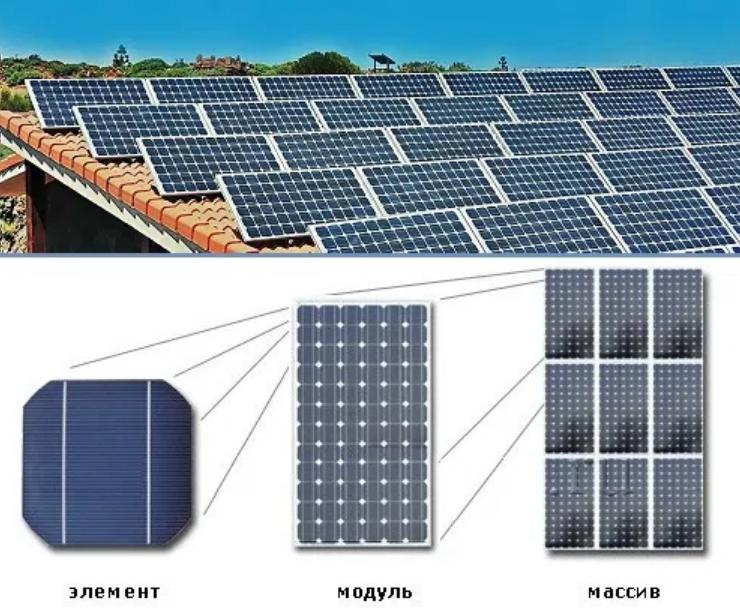
Monocrystalline batteries are the most efficient, with an average efficiency of 14 to 20%. Polycrystalline batteries have a much lower figure, ranging from 10 to 12%. Amorphous silicon versions are the least efficient, they are designed for scattered light and are used as an auxiliary power source, their efficiency is 5 to 6%.
By the way! Sanyo has its own development - a multilayer structure of the photovoltaic cell, so the efficiency of their panels is 23%.
The film versions are now made on the basis of cadmium, indium and gallium. This is a polymeric variant, it is good for its flexibility, while the performance is comparable to the classic rigid panels. Due to safety (all substances in the composition in a stable state) and low price, this solution is becoming increasingly popular.
Minimum kit for a private home
It is best to buy a ready-made set so that you don't have to assemble all the elements separately and understand the characteristics of each. Ready-made kits have all the necessary components, the characteristics of each are chosen so that the system works with the maximum effect. It is much easier to study the information, because it is collected in one place and systematized.
As for completeness, most often the set includes the following:
- Solar panels.. The main part, it is necessary to calculate the number individually, depending on the consumption of electricity. Think in advance about the location, this affects the efficiency of work.
- Controller Protects the system, monitors the level of charge of batteries and stops the voltage if they are fully charged. It is placed as close as possible to the panels.
- Inverter Converts the direct current into alternating current, which is needed to operate the appliances. It should be selected according to its power and remember that the nominal and peak values are different. It is not necessary to buy too productive variant, if the load most of the time is small.
- Batteries. They accumulate energy to give it away at times when the solar panels do not produce it or produce it in insufficient quantities. Uses multiple batteries connected by jumpers to form a single unit.
- The cable to connect all network elements, jumpers, fuses, circuit breakers and other little things. Again, if you buy a kit, everything you need will already be in the kit and you won't have to figure out what you need to buy additionally.
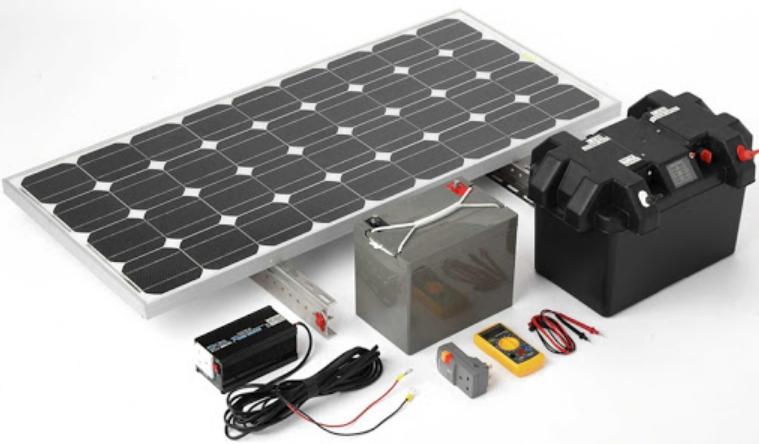
The composition of the kit can vary depending on the capacity, type of solar batteries used and mounting features. Many sellers add a rack to install batteries and a plastic box for several modules.
When choosing, consider not only the performance of the equipment, but also the manufacturer. It is best to read reviews on specialized resources or thematic forms. The opinion of those who use the system will allow you to understand whether the specified data correspond to the actual data and whether there are no problems in the operation of the selected set.
Video "will tell" about the experience of using solar panels.
Calculations before buying
To choose a set with suitable indicators, it is necessary first of all to calculate the capacity. It depends on the energy load, the higher this figure, the more productive batteries will be needed. For private houses, it is best to use panels with a capacity of 150 to 250 watts, while for a country house, options for 50 watts are enough.
First of all, you should calculate the basic power consumption, for this you need to take into account each device used and the average time of its operation during the day. Then you simply add up all the figures and you get the calculated load in kilowatt-hours.
This is the minimum figure to be guided by. It is required to make a certain reserve and take into account the energy losses that occur in the network, as well as the fact that the battery charge is gradually decreasing. Usually a reserve of about 30% is made, but it is better to make it more.
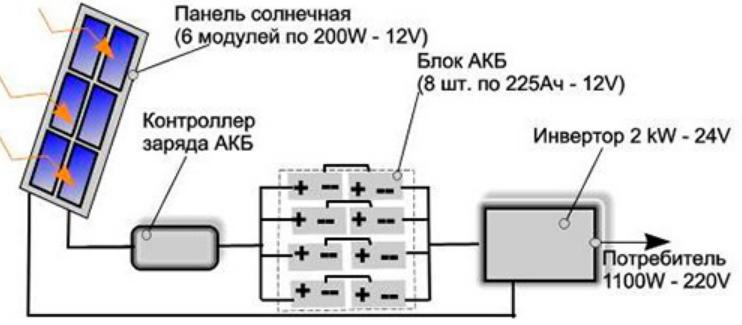
In order to significantly reduce the consumption of electricity and not to buy powerful equipment, which is much more expensive, it is worth transferring some of the energy consumers to 12 V voltage. You can put LED lights and buy some of the appliances under such characteristics. This will significantly reduce power consumption and save on solar panels.
Be sure to consider insolation - an indicator that reflects the amount of solar energy falling on a certain area. Use the chart with ready-made data to calculate the number of panels for your region. Note that the maximum is in summer and minimum in winter, do not miss this point.
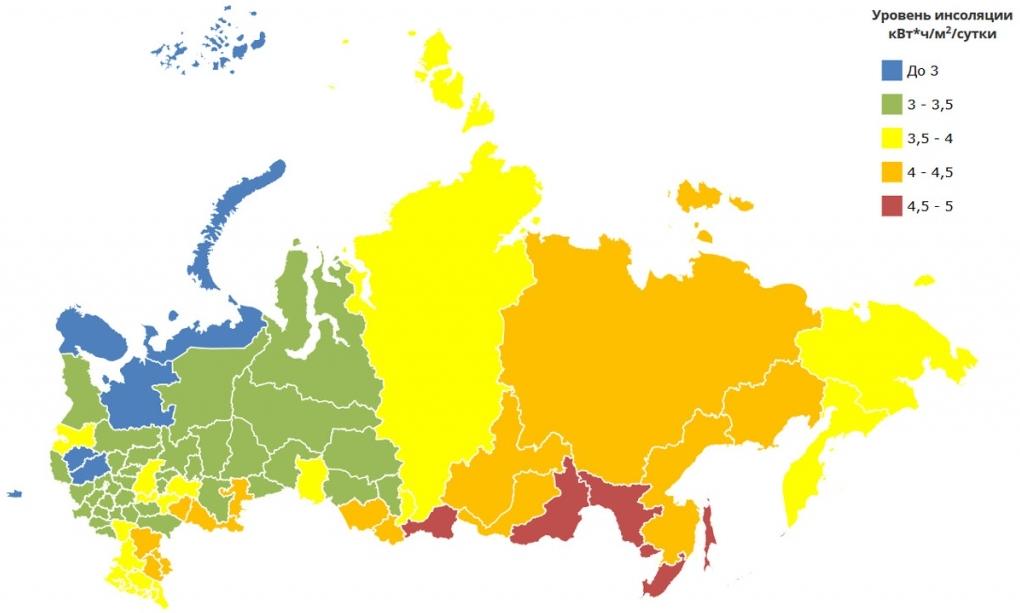
When you have all the data, you can calculate the basis for taking the months with the minimum insolation and focus on them. During these periods, the system will work almost at full capacity, the rest of the time with a reserve, which will eliminate overloading and rapid wear and tear due to increased loads.
Selection rules
To choose a solar panel without experience, you need to consider several aspects. Each of them is important, so it is worth to understand so as not to miss a single nuance:
- The manufacturer of solar panels. There are many options, it is necessary to choose those that have long been on the market and have proven themselves among users. The easiest way is to read reviews on specific models, then everything will become clear. Do not take cheap Chinese panels from unknown manufacturers, about which there is no information.
- PTC/STC index. They are determined by independent laboratories in the United States of America, the value reflects the performance under real conditions (manufacturers usually give figures for ideal conditions, which are unlikely to be achieved). The figure should be around 90%, the higher it is, the better.
- A small indicator of negative tolerance. This is what is called the deviation of the actual performance of solar panels from their nominal value, it should not be more than 3%. And even better if it is positive. At the same time you need to buy the same panels, because if you put different, then the system will work on the element with the lowest capacity and you will lose efficiency.
- Warranty service life. The average is 15 years, the information should be listed on the official website of the manufacturer and in the technical documentation. If there is no data or the warranty is much less, you need to clarify the reason. Often sellers offer defective panels, which are an order of magnitude cheaper, but also the warranty period is shorter.
- The efficiency of controllers and inverters must be at least 95%. Otherwise there will be significant energy losses in the system. On sale there are many options with efficiency up to 85%, but in fact the indicators are even lower, it is not worth saving on quality. Cheap Chinese products work unstable and energy losses when using them will be much more than you can save when buying.
- Reliability of the frame elements on which the panels will be installed. Many sellers, in order to save money, offer not the highest quality supporting elements. The reliability of fixing on them is lower and they do not last long. Buy better options made of coated aluminum from reputable manufacturers. Otherwise, there is a risk that the panels will simply fall down and the savings will end up costing a lot of money.
- The efficiency of selected solar panels. It is worth paying attention to this parameter only in order to calculate the area of the modules for normal energy supply. Nothing else is affected by this parameter. If there is room on the roofit is better to save money and buy modules with lower efficiency, this will not affect the operation of the system.
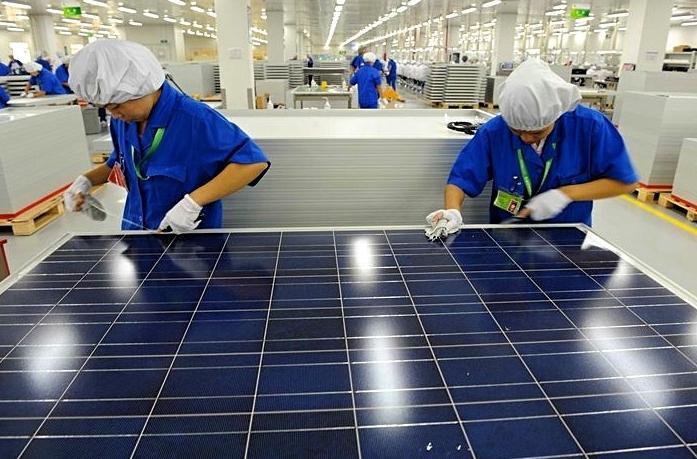
By the way! To compare offers, ask different sellers about the price of the set in terms of 1 watt of solar energy. This way you can compare which option is the most profitable.
Popular manufacturers
To make the system work for a long time, and the indicators from the technical documentation did not differ from the real one, it is worth choosing products from proven manufacturers. It is not worth saving on quality, when buying solar panels it is unacceptable. The best options today are the following:
- LG Energy. Is engaged in the development of panels for about 30 years and produces them on an industrial scale for 11 years. The factory is located in South Korea, the batteries have a warranty of 25 years and belong to the medium and high price segments. Premium products are popular in North America and Europe.
- SunPower. An American company that produces long-life solar panels. Over 25 years the capacity of the panels decreases by only 8%. The products are expensive, but considered one of the most durable on the market.
- REC Group. The Norwegian firm with production in Singapore produces reliable panels, gives a 20-year warranty, and the capacity drops slowly, so the life is much longer than the warranty. There are options from the medium and expensive categories.
- Panasonic. Another well-known brand. Solar panels of this manufacturer have a warranty of 25 years, the quality is high and the service life is long. Products are well suited for use in medium latitudes and have an efficiency of 18-20%.
- Jinko Solar. A Chinese company that sells products all over the world and is considered one of the best in the low-price segment. The products have a warranty of 25-30 years, the products are of high quality, despite the low price. There are both budget and mid-range options.
- Trina Solar. Another Chinese brand that offers cheap panels with good performance, but the warranty here is much less - 10 years, during this period the capacity drops by about 10%. Many experts consider this option the best value for money.
- Longi Solar. A company from China, which recently entered the global market, but within the country sells inexpensive solar panels for a long time. Monocrystals are used in production, which ensures good performance even at low temperatures and poor light. Efficiency ranges from 18 to 20%.
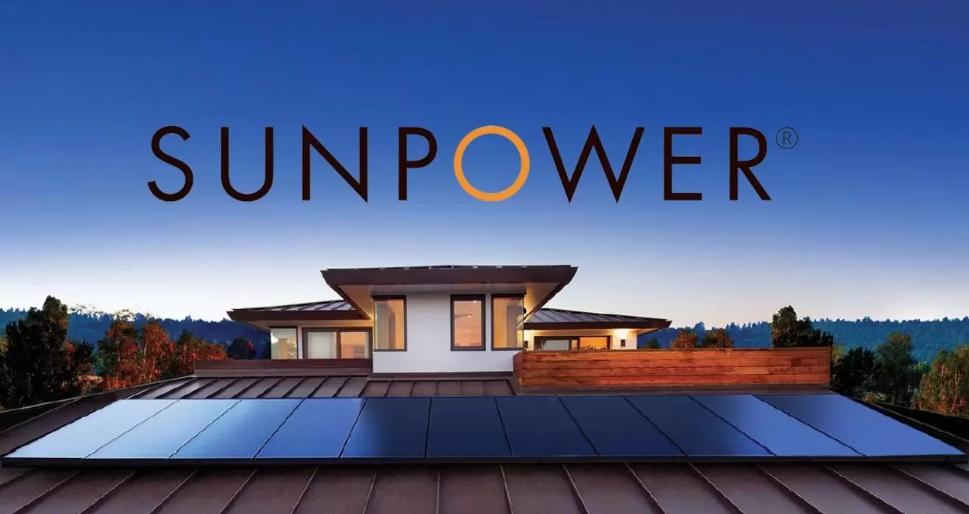
Kit cost and payback period
It is impossible to tell you the exact time frame in which the cost of the electricity system will pay for itself. There are many factors that influence this. But you can highlight a few important points and calculate the approximate figures that will work in most cases and help to assess the benefits and decide whether to make such a system or not:
- If the house is not connected to centralized communications, you should clarify how much it will cost to connect and execute all the necessary documentation. The costs vary by region and the work to be done by the power supply organization, they can range from 50 to 500 thousand rubles. In fact, the system can pay for itself from the first day, or it will take a couple of years.
- For uninterrupted power supply, if there is no connection to the network, it is easiest to use a generator. With it, the house will always have electricity, even if the weather is overcast for weeks. It is included only when necessary, which is also important. In such cases, the costs are recouped in an average of 5 years.
- If there is a central grid, it is possible not to put a generator and be powered from it when the energy produced by solar panels is not enough. A simple solution that allows you to reduce the cost of electricity, especially in the summer, when the system can provide full autonomy. In such cases, the average payback period is 15 years.
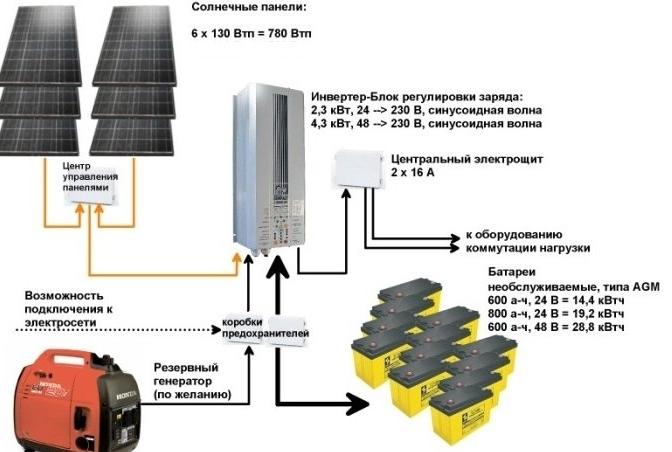
As for the price of the set, the average set of 4 modules for 300 watts and all the necessary to them costs from 120 to 200 thousand or more, it all depends on the manufacturer of components. This is enough to provide electricity for a house of about 100 square meters. If the structure is larger or smaller, the cost varies, but the payback period is usually about the same.
Service life of solar panels
To assess the benefits, you need to understand how long the panels last and whether they will have to be replaced after the warranty period expires. There are a few things to consider:
- Monocrystalline and polycrystalline options are the most durable. Over 25 years of use they lose no more than 10% of capacity. But even then the drop in capacity is insignificant, for the next 10-15 years about the same amount is lost. That is, it is safe to say that the service life of such options is 35-40 years, and maybe more.
- Thin-film options have a much lower life span - 10-20 years. Moreover, in the first 2 years the loss of capacity may be 10-30%, most manufacturers give a power reserve to compensate for this problem. Later the losses are not so significant.
- To increase the service life it is necessary to avoid damage to parts of the system. Trim branches from nearby trees, and wash the surface at least a few times per season. Check fasteners and contacts to make sure they don't overheat.
- Take into account the cost of replacing other elements of the system. For example, batteries usually last from 6 to 10 years (the most reliable - 15 years), the power electronics have a life of about 10-12 years. The cost of replacing these components is also not a little, and this must be taken into account when calculating the payback.
By the way! The more difficult the climatic conditions and greater the temperature differences between day and night, as well as between seasons, the shorter the service life of solar panels. In southern regions, they last much longer.
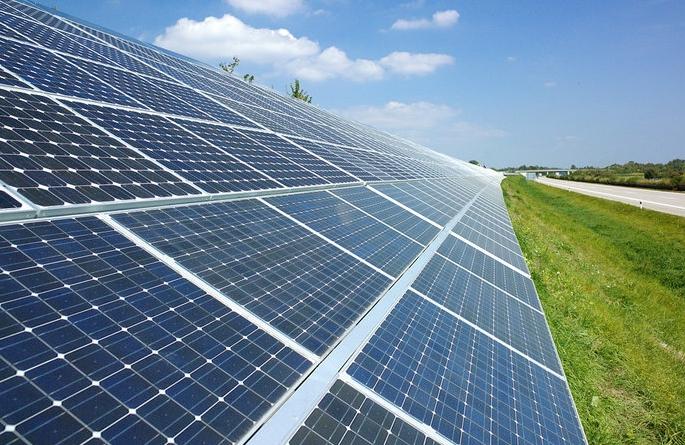
When choosing solar panels for your home, it is better to give preference to reliable and proven monocrystalline and polycrystalline options. Quality modules will last about 40 years, with a power loss of about 20% during this time.
